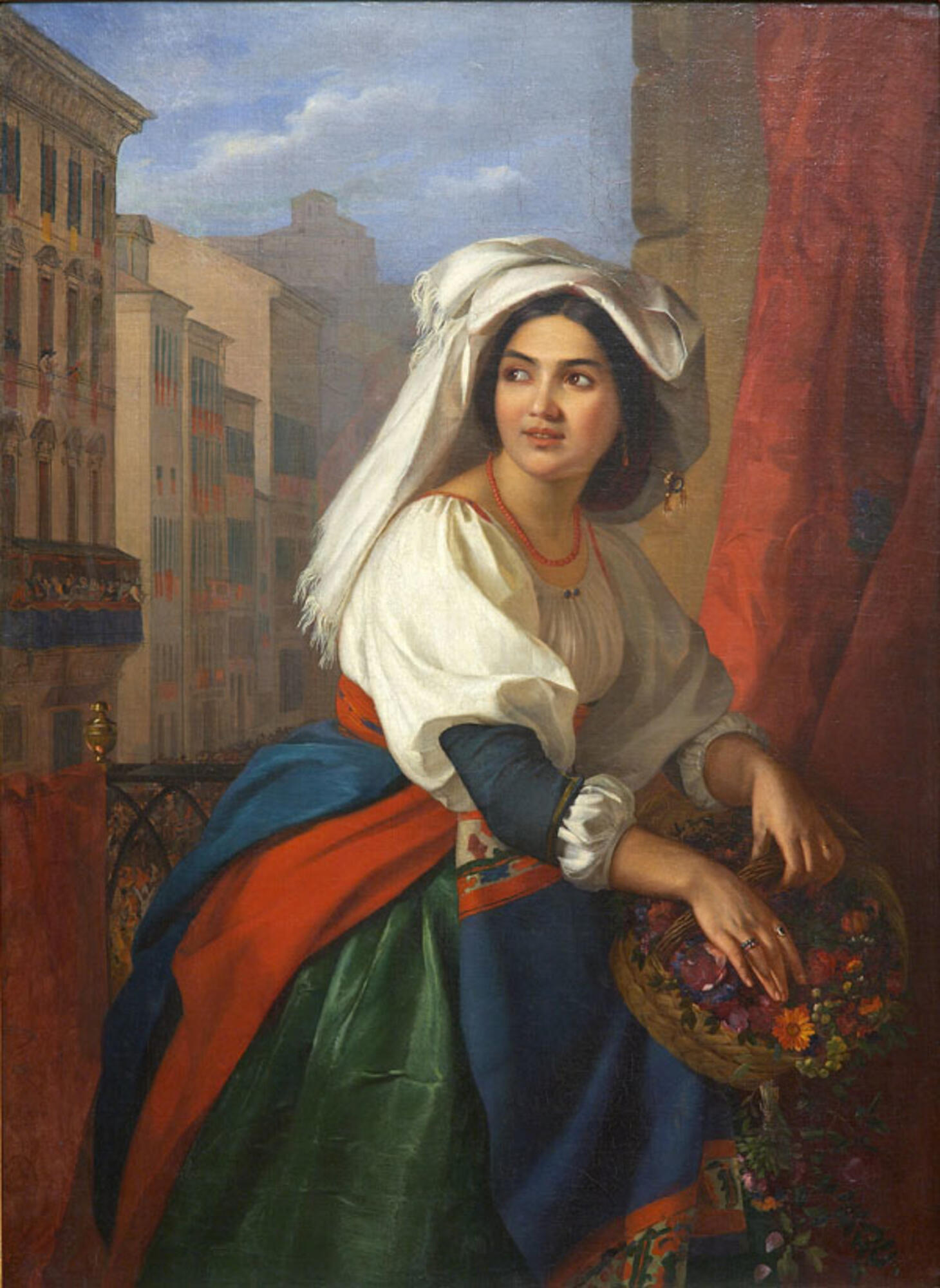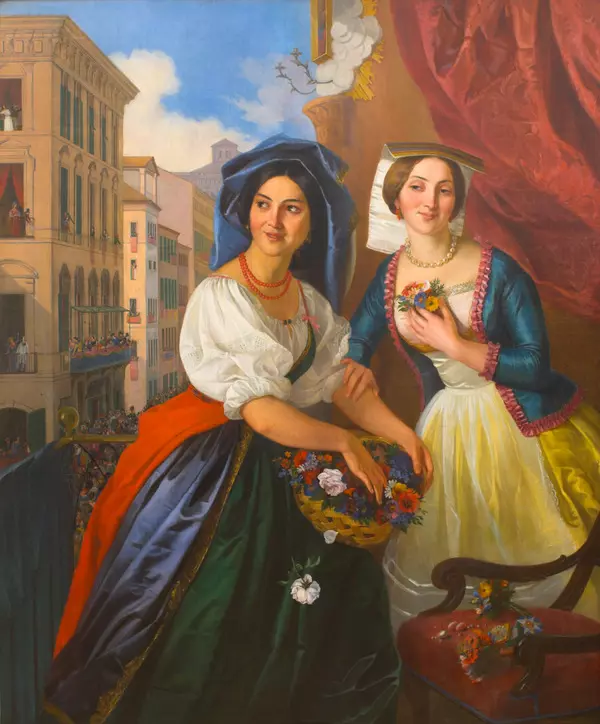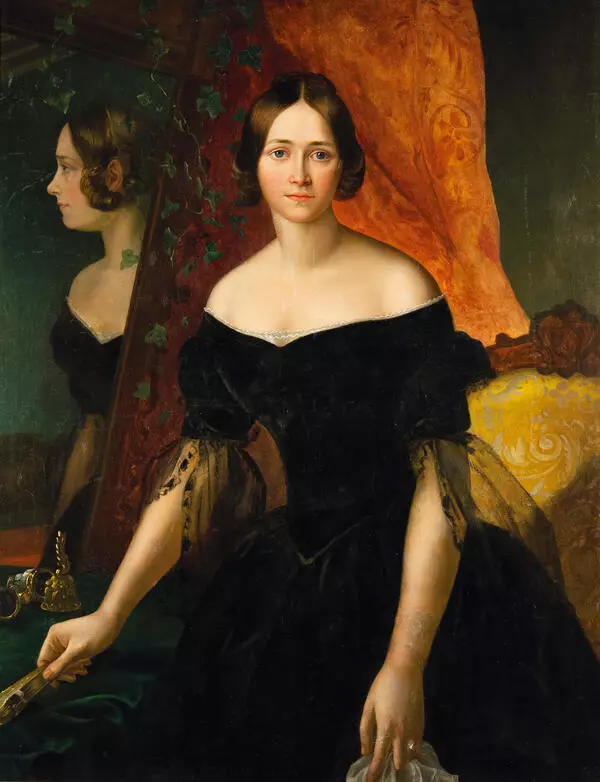‘The Girl at the Carnival’ by Apollon Mokritsky is one of the prime exhibits at the Taganrog Art Museum.
Apollon Mokritsky (August 12, 1810, Pyriatyn - March 8, 1870, Moscow) was a painter, draftsman, teacher, author of portraits, landscapes, historical and domestic paintings. In the history of art, his work has not been as thoroughly researched. According to extant sources, Mokritsky worked very productively and was a constant participant in art exhibitions. Yet, after several decades of creativity, significant part of his works was lost, and only a few that were signed and dated by the author are known. They are kept both in museums and in private collections.
Mokritsky’s work was formed on the basis of two art schools: until the mid-1830s he studied painting with Russian painter Alexey Venetsianov, and from 1836 in the class of historical painting with Karl Bryullov (1836-1839). The works of Bryullov had a special influence on Mokritsky, which is traced both in the choice of plots and in the artist’s pictorial manner. In 1841, using his own funds, Mokritsky went to Italy to improve his professional skills. There, the artist painted several portraits of the young Maria Giolli, the prototype of the ‘Girl at the Carnival’.
The painting was awarded at an art exhibition in Rome, and was highly regarded by contemporaries in Russia. Late in the 19th century, the work ended up in the family of the Taganrog industrialist Pallasov. In the 1920s, it arrived to the Taganrog Art Museum as a canvas of an unknown foreign artist and was only ‘discovered’ during restoration in the middle of the 20th century. Today the work is considered one of the widely known paintings created by Russian artists in Italy.
While working on the painting, Mokritsky largely preserved the style of the ceremonial portrait. The female figure is painted against the background of heavy ‘academic’ draperies, giving the portrait an air of solemnity. These elements coexist with sketches of the city landscape. The view from the balcony where the girl is located opens onto one of the busiest streets in Rome, Via del Corso.
The Italian woman wears a bright folk cloth, and in the artist’s interpretation, this is not inferior to the ceremonial background of the painting. The artist has conveyed perfectly the texture of the fabric, the voluminous folds of clothing, and chose rich and noble colors. Modest graceful jewelry emphasizes the beauty of natural forms, and a lavishly decorated basket of flowers makes the image even more picturesque.
Apollon Mokritsky (August 12, 1810, Pyriatyn - March 8, 1870, Moscow) was a painter, draftsman, teacher, author of portraits, landscapes, historical and domestic paintings. In the history of art, his work has not been as thoroughly researched. According to extant sources, Mokritsky worked very productively and was a constant participant in art exhibitions. Yet, after several decades of creativity, significant part of his works was lost, and only a few that were signed and dated by the author are known. They are kept both in museums and in private collections.
Mokritsky’s work was formed on the basis of two art schools: until the mid-1830s he studied painting with Russian painter Alexey Venetsianov, and from 1836 in the class of historical painting with Karl Bryullov (1836-1839). The works of Bryullov had a special influence on Mokritsky, which is traced both in the choice of plots and in the artist’s pictorial manner. In 1841, using his own funds, Mokritsky went to Italy to improve his professional skills. There, the artist painted several portraits of the young Maria Giolli, the prototype of the ‘Girl at the Carnival’.
The painting was awarded at an art exhibition in Rome, and was highly regarded by contemporaries in Russia. Late in the 19th century, the work ended up in the family of the Taganrog industrialist Pallasov. In the 1920s, it arrived to the Taganrog Art Museum as a canvas of an unknown foreign artist and was only ‘discovered’ during restoration in the middle of the 20th century. Today the work is considered one of the widely known paintings created by Russian artists in Italy.
While working on the painting, Mokritsky largely preserved the style of the ceremonial portrait. The female figure is painted against the background of heavy ‘academic’ draperies, giving the portrait an air of solemnity. These elements coexist with sketches of the city landscape. The view from the balcony where the girl is located opens onto one of the busiest streets in Rome, Via del Corso.
The Italian woman wears a bright folk cloth, and in the artist’s interpretation, this is not inferior to the ceremonial background of the painting. The artist has conveyed perfectly the texture of the fabric, the voluminous folds of clothing, and chose rich and noble colors. Modest graceful jewelry emphasizes the beauty of natural forms, and a lavishly decorated basket of flowers makes the image even more picturesque.





